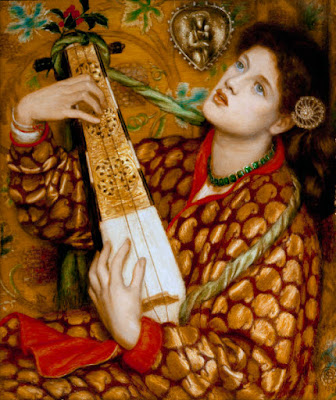We had a small earthquake last night ... about a 2.7 on the Richter Scale ... and we were upstairs, where we could really hear the little "boom" and feel the earth -- uncertain earth -- for just a moment. And it seems to me, as we have now had a few of these, that earthquakes are "feeling, then," AND "sound." Both. And so, to get myself away from worrying about earthquakes, I am thinking about Wallace Stevens and the poem where the line about "feeling" and "sound" shows up, "Peter Quince at the Clavier":
Music is feeling, then, not sound;
And thus it is that what I feel,
Here in this room, desiring you,
Thinking of your blue-shadowed silk,
Is music ....
Beauty is momentary in the mind --
The fitful tracing of a portal;
But in the flesh it is immortal ....
When I first read this poem, I wondered about that. Thinking about a thing makes it "real" and permanent -- gives it a place in the mind. But memory shifts, often because we will it to shift: Friedrich Nietzsche wrote "'I have done that,' says my memory. 'I cannot have done that,' says my pride, and remains adamant. At last -- memory yields" (an aphorism, from Beyond Good & Evil). So even a thought, a memory, disappears into another shape. So the live thing, the one we can hold, or hear, or see, or feel, that is the "immortal" thing. This may be why earthquakes, quite aside from the damage they can cause, are so scary -- because they can take up two senses at once, hearing and feeling.
So, in yet another attempt to escape these earthquakean ideas, I turn to paintings -- with music as subject. Here is a smooth-surfaced Caravaggio, "The Lute Player," from 1590:
The painter may have used a lens here for help -- David Hockney argues, in Secret Knowledge, that Caravaggio did use lenses in the 1590's -- just look at the photographic shadows and lighting here. Now, we skip ahead to a very different aesthetic, Dante Gabriel Rossetti, a detail from his "Christmas Carol" of 1867:
Is she playing? The strings here are of far less interest than her fingers (and eyes) ... Gustav Klimt was inspired by the final chorus of Beethoven's Ninth Symphony to paint this in 1902:
Here, the bodies and cloth and light is all reduced to beautiful patterns -- notes -- musical. The last painting is Matisse's "Music," from 1939:
The most musical, to me ... the eye is as engaged as the ear.




No comments:
Post a Comment